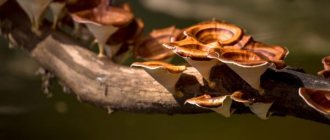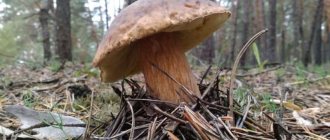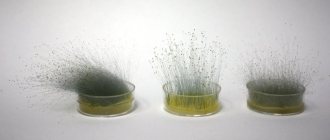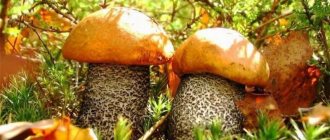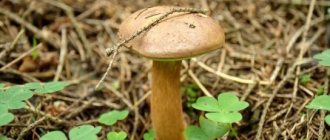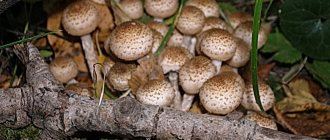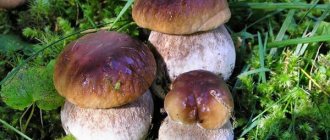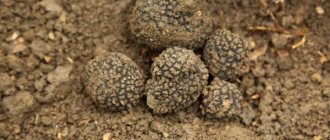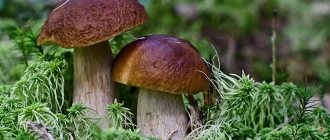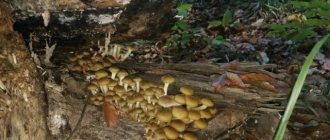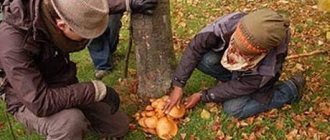Cereals are perhaps the most common type of agricultural crop. In order to obtain large yields of such plants, they, like any others, of course, need to be looked after. When growing cereals, much attention is paid to the prevention of various types of fungal diseases. Infection with such infections significantly reduces yields and, consequently, causes huge losses to agricultural enterprises. Most often, cereals are infected with smut. This fungal disease can in some cases destroy the entire crop of wheat, rye or, for example, corn.
What causes
Actually, mushrooms are a large group of organisms, numbering more than 100 thousand species. In the system of the organic world, they, like animals or plants, form a separate unit. Parasites stand apart from this. It is in this category that smut varieties of the fungus are included.
These parasites belong to the group of basidiomycetes. To date, scientists know about 1000 of their species. For the sake of order, they are all combined into 40 genera. Smut fungi are distributed almost throughout the entire Earth. These parasites are found in steppes, forests, deserts and even in the ice of the Arctic.
Cereals are most often affected by smut fungi Basidiomycetes (order Ustilaginales). In the development cycle, this parasitic organism has mycelium, spores, non-idiospores and gemmae.
Ergot
Ergot mushroom is a genus of parasitic fungi belonging to the ergot family. The organism develops on cereals, including wheat and rye, and sedges. The fungus settles in the ears and panicles of cereals. It affects the grains, makes them dark, affects the structure and shade of the elements of the ears.
The spread of the parasite is so great that it is even mentioned in international grain quality standards. Thus, in most countries the permissible share of the component should not exceed 0.05%. In some countries, such as Egypt, ergot must be completely absent from the grain.
The pest is present in almost any field where grain grows. It is almost impossible to get rid of it completely. Cleaning the seed from the horns can give good results. The following measures are also used to combat the parasitic organism:
- Special soil treatment at the end of plant harvesting.
- High-quality plowing of the field after grain harvest.
- Sowing plant varieties that have a short flowering period.
The following factors can lead to the spread of the pest:
- Weeds related to grain crops.
- Cloudy, cold weather for a long period.
- Strong winds during flowering of crops.
Infected grain is severely spoiled and unusable. Due to the presence of toxic alkaloids in such raw materials, it cannot be used either for people or animals.
The mushroom can be found in the Kaliningrad and Leningrad regions of Russia. You can also find it in Belarus and Ukraine.
Life cycle
Sclerotium is the nucleus of ergot. It can begin its development at the moment when a parasite spore infects the flowering of a cereal or herbal plant. This is how the infectious process begins. The fungus selects those plants that have an open flower.
The mycelium actively grows during the next stage of the plant's life cycle. It completely destroys the ovary of the selected object and reconnects with the vital vascular bundle. It is the bunch that provides nutrition to the seeds.
During the first stage of infection, the parasite appears as soft white tissue. It produces a sweet, spore-containing dew that often falls from the inflorescences. They are subsequently spread by birds to other plants.
If a mature sclerotium has fallen from a plant to the ground, it remains in a state of a kind of suspended animation until favorable conditions occur. This is usually rainy weather in early spring. Under such conditions, the parasite enters the fruiting stage. When germinating, the pest forms several fruiting bodies.
The parasite can camouflage itself. The color of the sclerotia is gray or brown, and the shape imitates the grains of the plant. Thanks to this adaptation, the pest often goes unnoticed.
Impact on humans
The mushroom synthesizes the dangerous alkaloid ergotamine. The biological activity of the alkaloid is very high and can greatly affect blood circulation and other natural processes in the human body. It is alkaloids that cause ergotism in people. The disease is divided into two types:
- During the disease, a person experiences a number of symptoms: high fever, loss of speech, severe muscle spasms. The person may experience paralysis and tremors. His perception of the world around him can become manic, and hallucinations often appear. Symptoms are caused by the strong effect of alkaloids on the nervous system.
- The second type of ergotism is characterized by a strong burning sensation, lumbago (acute pain) in the toes and hands. In this case, the alkaloid affects the vascular system. Blood circulation can be impaired to such an extent that a person develops gangrene, leading to loss of limbs.
Common symptoms of alkaloid intoxication, which are also identified in medicine, include:
- Contractions of the uterus.
- Nausea.
- Loss of consciousness.
- A sharp increase in temperature.
- Swelling of the limbs.
The mushroom is no less dangerous for animals. Cattle most often suffer from it.
How do grain crops become infected with smut fungi?
Diseases caused by Basidiomycetes have remained a real mystery for researchers for a long time. Scientists first explained the blackening of the ear by a metabolic disorder inside the plants. Later, it was also suggested that such changes appear as a result of the vital activity of some insects or ciliates.
Researchers found spores of smut fungi in blackened plants only at the end of the 19th century. Since then, it has, of course, become easier to combat this disease of cereals.
Agricultural crops are infected with smut most often during harvest. The spores of the parasite adhere to the grains and can be stored with them in elevators until the sowing season. They can remain in the soil itself for a long time, perfectly tolerating adverse weather conditions.
The spores of this parasite do not require a period of rest. They germinate immediately after environmental conditions change to suitable ones - the air temperature and soil moisture increase. The mycelium may begin to develop from spores in the fall or next spring.
During sowing, spores also enter the ground with grains. At the initial stage, the parasite does not form a very large mycelium. But later the developing mycelium infects the sprouts of cereal crops that emerge from the grain. Next, the mycelium gradually spreads inside the stem of the ear of wheat, rye, etc. as the plants grow. Around the time the crops flower, it reaches a panicle. Immediately after this, the mycelium significantly accelerates its development. As a result, the ear gradually begins to turn black, and the grains begin to be replaced by parasite spores.
Parasites can destroy the entire crop
These parasitic fungi are extremely insidious. They parasitize on those parts of grain crops for which they are grown: on the cobs of corn or on ears of corn. If smut spores infect the grain, it stops developing or completely degenerates into a spore mass. These harmful organisms can completely destroy the crop. Therefore, they are the main enemy of agronomists.
The consequences that smut fungi lead to are sometimes not immediately visible. There are pathogens of this disease that do not completely destroy the ears and ears, but prevent their full ripening. These types of parasites penetrate the plant during grain ripening and inhibit its vital activity. Such ears have very low seed germination, they grow more slowly, and the grain fills worse than that of uninfected plants. Such consequences of bunt are called hidden losses. They are especially noticeable on winter wheat.
These parasitic fungi are very tenacious. Smut spores persist for years on the soil surface. Some types of parasites can live for a long time even inside grain. In spring or autumn, at normal temperature and humidity, smut spores quickly germinate, infecting a new crop. True, there are species in which germination can occur after several years. These are spores that are present in the growths of plant organisms or require a period of rest.
How does mycelium develop?
Smut is not only a common disease, but also difficult to treat. A feature of Basidiomycetes mushrooms is their very strong and viable mycelium. It usually spreads across the affected tissue between the cells, but sometimes it can penetrate through the cells.
Before breaking up into spores, the Basidiomycetes mycelium begins to branch very strongly. Its hyphae are divided by additional transverse partitions. After some time, the shells of the mycelium cells become slimy and then replaced with denser ones. Next, the cells are detached from the main branch of the mycelium. Such isolated areas are called smut spores. On the ear they form a clearly visible black mass (sometimes dense, sometimes dusty).
The mycelium of this type of mushroom usually does not penetrate the entire plant. Depending on the specific type of pathogen, it can be seen, for example, in the ovaries of crops, in the stem, in parts of the ear.
Polypores
These fungi grow primarily on trees, including garden crops, penetrating under the bark of healthy wood through the smallest hole in the form of a cut. Once there, the spores begin to actively develop, feeding on the sap of the tree and destroying it, and continue to colonize the space even after the complete death of the host, turning into a saprophyte state.
There are tinder fungi that can live up to 20 years.
Externally, tinder fungi can look different, but generally have a semicircular shape. The pulp is quite hard, so separating some species from the trunk can be very problematic. The color also depends on the variety and can be white, gray, orange and even reddish.
The most common tinder fungi are:
- birch;
- pine;
- real;
- scaly;
- sulfur yellow;
- bordered.
What types of smut are there?
So, we have found out how grain crops become infected with smut fungi and how this parasite develops. Basidiomycetes can infect all types of cereals, as well as corn. Depending on the location of the main concentration of the mycelium and the characteristics, the following types of smut are distinguished:
- stem;
- bubbly;
- hard;
- dusty;
- dwarf.
Based on the nature of its manifestation on grain crops, smut is divided into hard and dusty. In the first case, only the grains themselves are affected. Their shells are almost completely preserved. In them, like in bags, are the spores of the fungus.
When infected with dust smut, the plant is almost completely destroyed. The fungal spores do not linger on the ear. Gusts of wind very quickly carry them across the entire field.
Geographical distribution of the disease
Smut is widespread . The causative agents of this disease have the same range as the plants that feed them.
Bunt is widespread everywhere . Loose smut - in the European part of Russia, in some areas of Western Siberia, in small pockets in the Samara and Orenburg regions, in the North Caucasus and Transcaucasia.
Stem and dwarf smut are observed in the Stavropol Territory and Crimea.
Indian smut is not registered in Russia.
What harm does a mushroom cause?
As already mentioned, smut is a disease that, under certain circumstances, can destroy an entire crop. Parasitic fungi of this variety also cause indirect harm to plants. Ears infected with mycelium develop poorly, become weak, and cannot resist all kinds of infections. At the same time, on top of everything else, their winter hardiness and drought resistance are also significantly reduced. Many plants infected with smut do not even have time to emerge before harvest. Smut causes particularly severe damage to winter grain crops.
Flour from wheat, rye, etc., infected with smut, is of poor quality. At the manufacturing stage, infected grain must be additionally sifted to remove fungal spores. However, baked goods made from such flour still turn out tasteless. Unfortunately, the products acquire a characteristic smut taste.
Symptoms
Symptoms of infection appear on the panicle and ear of wheat . At a certain stage of development, the mycelium of smut fungi breaks down into individual cells, which are covered with a thickened membrane and turn into spores.
A dusty or dark-colored mass forms in modified grains, stems or even on leaves. Clusters of spores give affected parts of the plant a charred appearance, as if the plant is covered in soot. That’s why the disease is called smut (photo below).
How to fight
To prevent infection of grain crops with smut, you should:
- be sure to treat the seeds before planting;
- follow agricultural practices - alternate sowing grain with other agricultural crops.
You should also try to grow only resistant varieties of cereals in your fields. Breeders have bred many of these. For example, millet smut rarely develops on varieties such as Kinelskoe 92, Kharkovskoe 86, Saratovskoe 3, etc.
Treating is usually done by keeping the planting material in warm water (about 47 °C) for 3 hours. You can also kill smut spores with special drugs, for example, Vitavax.
As already mentioned, infection of cereal crops with this disease can also occur directly through the soil. In addition to alternating types of agricultural plants, measures such as peeling the soil in the spring should therefore be taken.
Micro- and macroparasites
Parasitic fungi are divided into 2 main categories.
- Microparasites that reproduce inside the body of their host or in its cells. They belong to the class of chytridiomycetes. Found in algae, other fungi, invertebrate animals, and on the roots of land plants.
- Macroparasites that grow in the body of their host, but reproduce using special forms. Over time, they leave the host's body. This category includes representatives such as ascomycetes (for example, ergot), deuteromycetes, oomycetes (phytophthora), basidiomycetes (tinder fungus).
What damage can a disease cause to a summer resident?
Fungal diseases of cereals are actually very dangerous. However, owners of suburban areas rarely grow grain in their gardens, of course. But even in the garden, smut can cause quite significant harm. Very often, for example, summer residents who grow corn encounter it. This popular crop is commonly infected with the bladder smut variety. In this case, the fungus affects not only panicles and cobs, but also other parts of the plant. The parasite usually develops on young, not yet hardened corn tissues. Yield losses due to infection of cobs reach 50% on average.
In order to protect plants, in the garden, as well as in the fields of agricultural enterprises, you should first of all adhere to the rules of crop rotation. If this condition is met, the summer resident most likely will not have to face such a problem as corn smut.
Also, to reduce the risk of crop loss due to the fungus, it is worth using seed only from smut-resistant varieties and treating it with Triticonazole before planting. The corn bushes themselves need to be treated with some kind of fungicide from time to time for prevention. In autumn, all plant residues should be collected from the beds and burned. In this case, the soil itself on the site needs to be dug up using a spade bayonet.
Use of contaminated grain
It is undesirable to use wheat grains infected with smut for food . The spores contaminate the flour, it acquires the smell of spoiled herring and a dirty color. Bread made from such flour does not bake well, smells unpleasant and has a sweet taste.
To get rid of smut, wheat is washed in a washing machine and brushed three times . The grain purified in this way is mixed with clean grain. According to quality standards, the amount of smut grain in wheat should be no more than 5%
